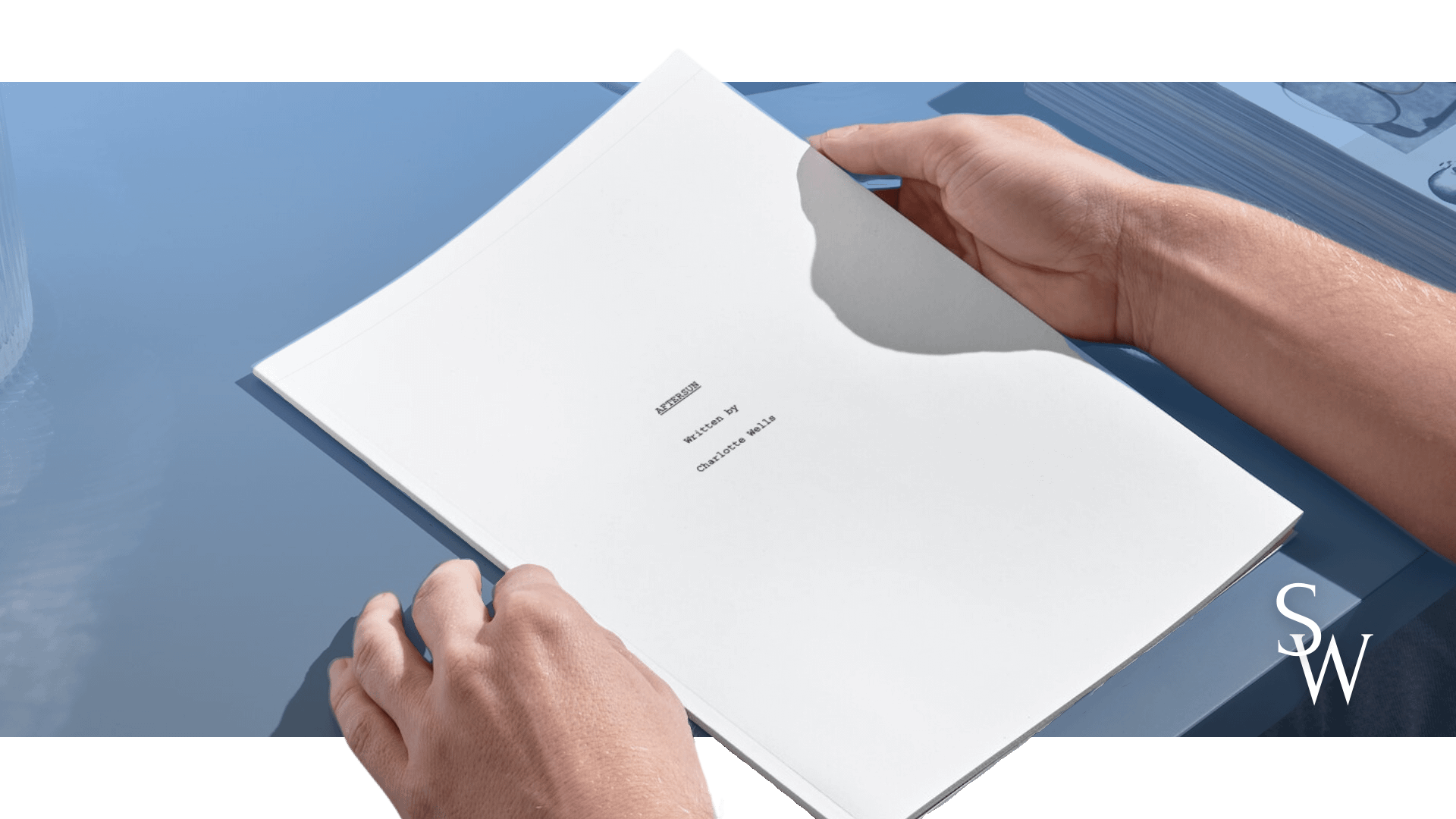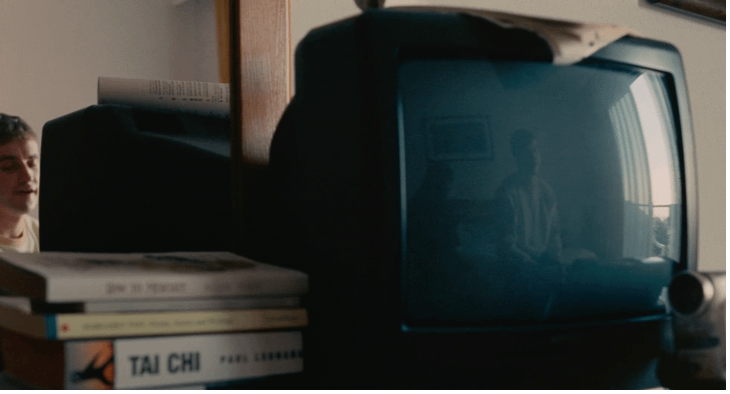Film Synopsis
Aftersun: At a fading vacation resort in the late 1990s, 11-year-old Sophie (Frankie Corio) treasures rare time together with her loving and idealistic father, Calum (BAFTA winner Paul Mescal, Normal People). As a world of adolescence creeps into view, beyond her eye Calum struggles under the weight of life outside of fatherhood.
Twenty years later, Sophie’s tender recollections of their last holiday become a powerful and heartrending portrait of their relationship, as she tries to reconcile the father she knew with the man she didn’t.
(Source: Aftersun Official Marketing Assets)
Aftersun Screenplay
For clarity’s sake, I will be referencing specific scenes from the film based on their numbered designation in the screenplay. You can access it by clicking the image.

The film ‘Aftersun’ by Charlotte Wells is a standout surprise in this year’s cinema landscape. Its director, whose short films already showcase her formidable storytelling skills and interests, has masterfully condensed a daughter’s reunion with her father’s memory in an exceptional way. In this post, we will delve into one of the most intriguing aspects of the film and screenplay – the protagonist’s perspective.
Adult Sophie’s POV
The film starts at a pivotal moment in Sophie’s life. She is turning 31 (scene 107), which was her father’s age was when they took their last holiday in Turkey. By revisiting her memories of through a DV camera, Sophie is able to understand him, move forward in her life (now as a mother), and reconcile with herself. This is exemplified by the film’s powerful final scene (scenes 122-130), set to the music of ‘Under Pressure’ by David Bowie and Queen.
Once we see the film a second time, we are occupying the place or the gaze of the Adult Sophie as we re-encounter those moments that we didn’t understand in the first viewing (certain attitudes, lines of dialogue, and emotions). In short, the film’s point of view is that of an adult Sophie, who is looking back on her memories with a new level of understanding and perspective.
Adult Sophie was the overarching perspective in the film and beneath that, you have other perspectives: you have Sophie’s direct point of view, almost images that are the basis of memories; and then, you have Calum alone, which are imaginings to some degree where we kept him more arm’s length, we shot those [scenes] further away, he was usually abstracted or obstructed from view.
— Charlotte Wells, Writer-director
Sophie’s Picture of Her Father
Not only should we focus on Sophie’s perspective in scenes where she appears. The scenes in which she does not appear, mainly the ones where Calum is alone, are her imagination. In these scenes, the film often portrays Calum with his back to the camera, or from a distance, giving us a sense that we are looking at him through Sophie’s eyes.
For example, in the screenplay, Calum stands on the balcony railing (scene 86) or swims deep into the sea until he disappears entirely enveloped by darkness (scene 55). Moreover, scenes that are not captured through the DV Cam footage are instead “depicted” through Sophie’s ‘little mind camera,’ as she refers to it when her father disconnects the DV Cam from the TV in scene 77.

In scenes 62 and 63, the camera takes Sophie’s perspective completely. It turns around as she lies on the bed and looks towards her father at the bathroom. When asked by Calum, Sophie says: “I feel a bit down or something.” and explains how she feels. That feeling is shared by her father but he hides from her (hence why he disappears from Sophie’s view). His depression causes him not to even look in the mirror and spit at his own reflection.

The Power of Memory in Aftersun
The central theme of the film is memory, and the film makes several notable points about this theme. As the audience, we are transported to the world of Sophie’s memories. Firstly, this is reinforced by the film’s use of the digital video camera, which sometimes fractures the images (pixelated and grainy) and sounds of the past.
Secondly, many of the script descriptions are stationary shots while we hear them (pre-lap or post-lap) or ambient sounds. For example, the shots of the amphitheatre and the photo being revealed while they have dinner (scene 121), are static. They reinforce the film’s theme of memory. Also, they emphasize adult Sophie’s POV as she recalls these moments. These small moments are how our memory works when it comes to remembering moments from our past.

Subplots
The film’s central narrative of reconnecting with a father figure is reinforced by two subplots. These are the subplot with the older teenagers and the subplot with Michael. They play a significant role in Sophie’s journey to maturity. Also, several objects in the film reveal this theme:
- The adult books Sophie finds at the reception
- The all-inclusive wristband
- The cocktail stirrer shaped like a naked woman
- The scene in which she tidies the room
That scene (76) is particularly significant. Even Wells fought to keep it in the film as it is a turning point in Sophie’s growth.
An important object in the film is the carpet that Calum ends up buying in Turkey (scene 75). It also appears in the present-day New York, under Sophie’s bed when she wakes up on her birthday (scene 107). Calum refers to it as a “collectible” (scene 68), a valuable item that goes beyond its cost. Undoubtedly, it holds a sentimental value in the father-daughter relationship given the father’s tragic end. Another relevant object is the postcard that Calum writes to Sophie (scene 138).
![[Aftersun still] Calum's carpet at the feet of Sophie's bed](https://mlyafrsjgwoj.i.optimole.com/w:1024/h:549/q:eco/f:best/ig:avif/https://www.screenplaywise.com/wp-content/uploads/2023/02/Aftersun-scene-107.png)
![[Aftersun still] Calum's final letter to Sophie](https://mlyafrsjgwoj.i.optimole.com/w:1024/h:549/q:eco/f:best/ig:avif/https://www.screenplaywise.com/wp-content/uploads/2023/02/Aftersun-scene-138.png)
Aftersun Ending: film as resolution
‘Aftersun’ joins other films that find resolution through the medium of film itself. Without the digital video camera, there would be no story. It is through the camera that an adult Sophie is able to reconnect and reconcile with Calum.

And finally, as a reward, you can watch the entire final sequence of the film from Script to Screen in this next video…


